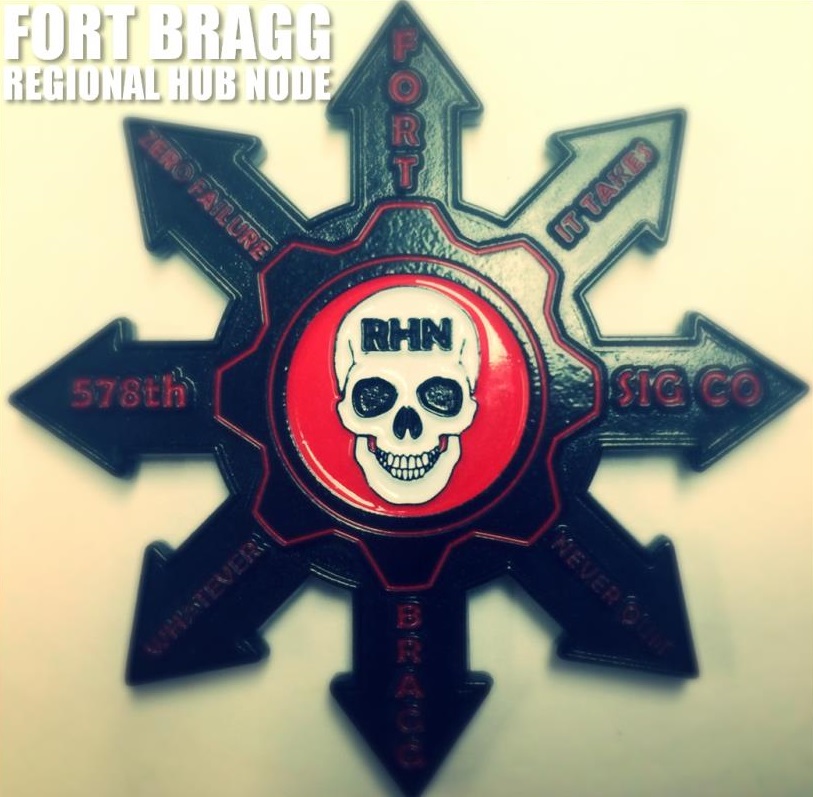The Bragg Regional Hub Node (RHN) is one of five RHNs in the world. The RHN is a critical component in the Warfighter Information Network Tactical (WIN-T) architecture and has significantly evolved over the past three to four years, meeting the ‘needs and requirements’ of the ever growing and developing WIN-T program. Regional Hub Nodes are an integral part of the network architecture and provide critical support for all three Army components and the Marines.
Managing IP Space
Who is responsible for managing your unit’s IP space? Is it you? Is it the 255A or 53? Do you actually have someone who is responsible for issuing and controlling the IP space for the unit? There was a recent discussion in the 255N Facebook group about things we can do to secure the network. One of the things brought up was knowing every device that was on the network. While that is important (and one I will get too shortly), today I want to talk about something a little simpler, knowing where all of your IP space is.
Whose Got Your Backup?
I think that most in the military would agree that there has to be someone in charge. Who that person is may well change for a variety of situations, but there is always someone that is in charge. From a command perspective it is the Commander followed normally by his deputy. From a mission command perspective it is normally the TOC (or Main) followed by the TAC. From a network perspective it is NETOPS followed by….
Air in the Fuel Line
Just a quick post today. I didn’t include it in my NTC trends (although I probably should have) but something so incredibly easy to fix and yet I have seen it happen probably almost every single rotation (and in fairness, it happens probably once a rotation for my teams command post too)…..Getting air in the fuel line (aka…running out of gas).
What to do with a TAC JNN
The standard BCT is issued two JNNs normally designated to support the BDE Main and the TAC however many units have found that this may not be the best way to actually employ these systems. One sign of a true Net Tech in my opinion is someone who is able to examine their assets and design a network that makes sense, not one that the Army prescribed.
Security Technical Implementation Guide (STIG)
Many Net Techs have heard of a STIG (Security Technical Implementation Guide) but most have never actually looked at them before. The STIG, combined with NSA guides are considered the “best practices” for information assurance within DOD systems. While there is nothing that says that your systems MUST be configured to their standards it is important to realize that by not configuring them in the recommended way means that you are accepting risk.
Quality of Service (QOS) in WIN-T 1A
Quality of service (QOS) is one of those things that nearly every net tech has heard of but most know nothing about. We think of it as a silver bullet but are sorely mistaken. Take some time to learn about it and figure out how it can help you.
Trends from the National Training Center Part 6 – Network Security
Our networks play a vital part in allowing the units we support to communicate which enables to commander to “impose his will on the enemy” (a my boss likes to always say). But if the network is not secure it can easily be used against us. This is part six of a series of posts concerning the network trends that I regularly see here at the National Training Center as units pass through on rotation.
Trends from the National Training Center Part 5 – HCLOS
The high capacity line-of-sight (HCLOS) radio provides a high bandwidth low latency link between two nodes in the WIN-T network. It can greatly expand the capabilities of the BCT’s network but must be deliberately planned. This is part five of a series of posts concerning the network trends that I regularly see here at the National Training Center as units pass through on rotation.
Trends from the National Training Center Part 4- Signal Maintenance
The Brigade S6 is responsible for providing the overall communications plan for the BCT. In order to accomplish that mission, they must continually know the status of all systems that support that mission to include JNNs, CPNs, and STTs along with their support equipment (generators). This is part four of a series of posts concerning the network trends that I regularly see here at the National Training Center as units pass through on rotation.










